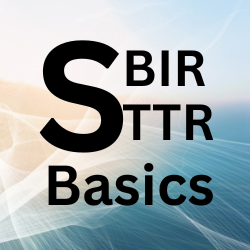Small businesses that receive funding through the SBIR (Small Business Innovation Research) or STTR (Small Business Technology Transfer) programs must meet strict compliance requirements. These federal programs offer incredible opportunities, but they also come with accountability. Non-compliance risks funding, reputation, and future awards.
Don’t Delay Compliance; The Risk is Real
Too many SBIR/STTR recipients take the money and plan to “deal with compliance later.” That’s a dangerous move. Ignoring the rules is like standing in a storm holding a lightning rod; it’s only a matter of time before trouble strikes.
When you accept federal funds, you agree, directly or indirectly, to follow all laws, rules, and contract terms. Spending the money without meeting those requirements puts your business at serious risk.
Fix Non-Compliance Before It Becomes a Bigger Problem
Non-compliance isn’t just a small error; it can lead to fraud claims, False Claims Act violations, and even civil or criminal charges. The best way to protect your business is to get compliant from the start.
If you’ve never been compliant or fallen behind, it’s not too late. While you can’t undo past mistakes, you can show that your business is serious about meeting requirements moving forward.
Take action now. Build a solid compliance program that follows SBIR/STTR rules and government accounting standards. Showing you’re committed to doing things right can make all the difference. Below is a practical guide to help you implement a compliance program and upgrade your accounting system.
Start with a Compliance Assessment
Begin by identifying where your current systems fall short. Review the SBIR/STTR guidelines, contract terms, and reporting requirements. Look at:
- Timekeeping and labor distribution
- Cost allocation and segregation of direct vs. indirect costs
- Reporting and audit readiness
- Record retention and documentation
Engage a compliance expert if necessary. An independent review can provide a clearer picture and help avoid costly mistakes later.
Design a Tailored Compliance Program
Create a written compliance program based on your findings. This program should outline:
- Internal controls for cost tracking and approval processes
- Policies for timekeeping, procurement, and subcontractor oversight
- Training protocols for employees and leadership
- Reporting and audit procedures
Focus on clarity, accountability, and enforceability. Make sure your team understands the policies and their responsibilities under federal guidelines.
Update or Implement a Compliant Accounting System
Your accounting system must meet Federal Acquisition Regulation (FAR) standards. Many SBIR/STTR recipients fail audits due to inadequate or non-compliant systems.
Your upgraded system should:
- Track costs by project and phase
- Separate direct, indirect, unallowable, and fringe costs
- Maintain an audit trail for all transactions
- Support labor distribution reporting
- Handle provisional billing rates
Cloud-based platforms like QuickBooks with DCAA add-ons, Deltek Costpoint, or Unanet can help small businesses meet these standards without breaking the bank.
There is no one-size-fits-all solution. Develop a solution that fits every business and funding phase, but ensure it can scale with your future growth.
Develop Policies and Train Your Team
Policies only work when people follow them. Train your team on new systems and compliance rules. Focus training on:
- Daily timekeeping practices
- Cost allowability
- Expense documentation
- Proper billing and invoicing
- Record retention (typically six years for federal awards)
Document all training efforts and include them in your compliance file for audit readiness.
Conduct Internal Reviews and Monitor Compliance
Build in regular internal reviews to catch issues early. Perform monthly or quarterly compliance checks on the following:
- Labor records and timekeeping logs
- Cost classifications and indirect rate calculations
- Invoicing and reporting processes
Use checklists and internal audits to track performance and quickly address gaps. Set a regular schedule to review your compliance program and update it based on changes in funding, project scope, or federal requirements.
Engage Experts as Needed
Don’t try to do it all in-house if you lack experience with government contracts. Seek out experts in government grants and contracts. Be sure your attorney and CPA understand the rules for SBIR and STTR awards.
Investing in expert support pays off by reducing the risk of disallowed costs, audit failures, or repayment demands.
Document Everything
Compliance requires documentation. Keep records of:
- All financial transactions tied to your SBIR/STTR awards
- Timekeeping entries and labor allocations
- Subcontractor agreements and performance
- Compliance training and internal reviews
Create a compliance binder, digital or physical, with organized files to make audits smooth and stress-free.
Conclusion: Compliance Is a Business Strategy
Treat compliance as a strategic function, not just a paperwork exercise. By building a solid compliance program and upgrading your accounting system, you protect current SBIR/STTR funding, mitigate risk, and position your business for future awards, investor confidence, and government contracts.
Act now. Take control. Make compliance your competitive advantage.
Need help designing a compliant accounting system or program for your SBIR/STTR project? Reach out to a government contract specialist to get started.


